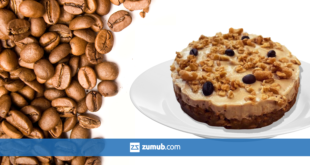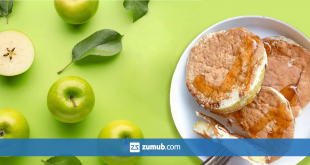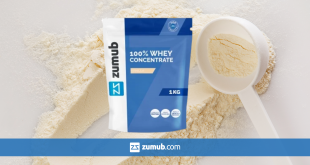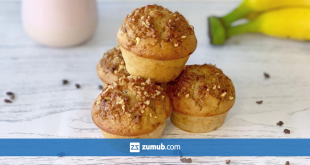
We all love dried fruit or, more correctly, oleaginous fruit. But do you know the benefits they offer? Do they make you put on some weight or are they good for those who work out? When is the best time to consume them? How to use them?
Read to the end to find the answer to these questions and to have access to some recipes!
Benefits:
They are foods that should be part of a healthy diet. In addition to their pleasant taste, they are very versatile and have numerous health benefits. Besides, they are a super practical snack to have always at hand.
They are rich in good fats, especially omega 3 and 6, are rich in fibre, are sources of vitamins and minerals, and also have an interesting amount of protein.
Because of this, they are considered key foods to reduce the risk of pathologies such as metabolic syndrome and cardiovascular diseases, as has been shown by recent studies.
Let’s look at the main benefits:
- Satiety control: by fibre, protein, and good fat content.
- Improve the lipid profile – cholesterol control: they are rich in unsaturated fats, which reduce LDL cholesterol and increase HDL.
- Improve intestinal health: also, by the fibre and good fat content.
- Energy increase: they have a high energy density.
- Act as an anti-inflammatory: due to the omega 3 content, they reduce body inflammation, which minimizes joint pain and helps muscle recovery.
Nutritional information:
Let’s now compare the macronutrient content of the most common oleaginous fruits. Note that although peanuts are not an oleaginous fruit, their characteristics are very similar to foods in this group, so they are often included and so we will consider them here:
| Fruit (100g) | Calories (kcal) | Carbohydrates (g) | Protein (g) | Lipids (g) | Fibre (g) |
| Nut | 689 | 3,6 | 16,7 | 67,5 | 5,2 |
| Almond | 626 | 7,1 | 21,6 | 56,8 | 12,2 |
| Cashew | 607 | 19,4 | 19,6 | 50 | 3.3 |
| Pistachio | 599 | 12,6 | 18 | 53 | 8,5 |
| Hazelnut | 677 | 6 | 14 | 66,3 | 6,1 |
| Peanut | 571 | 10,1 | 25,4 | 47,7 | 8,8 |
*Source: Ricardo Jorge Institute’s Food Composition Table
Please note that oleaginous fruits must be consumed in their natural version, without added salt, fat, or sugar.
Are they good for losing weight or for those who want to gain muscle mass?
Like any other food, they should be consumed in moderation, as they have a high energy density (high calories in a small amount of food), despite their health benefits.
Let’s analyse:
In a weight loss process, it is common to have some micronutrient deficiencies (vitamins and minerals), especially for those who have been in caloric deficit for some time. Thus, oleaginous fruits are interesting for being rich in micronutrients, helping to control these deficiencies, in addition, their fibre and fat content will give satiety throughout the day, preventing hunger peaks.
However, these can be extremely addictive, so if you have difficulty controlling amounts, it can become a challenge as you will easily overconsume.
For those who exercise regularly and want to gain muscle mass, they also have advantages:
• Micronutrients and antioxidants: minerals such as calcium, selenium, and iron help in muscle recovery processes.
• High caloric value: in this case, it is an advantage as it helps to reach the daily caloric value for those who are on a hypercaloric diet.
Should I consume it before or after training?
Despite their high energy value, the ingestion of oleaginous fruits should be avoided close to a training session.
They are mainly a source of fat, so their digestion takes longer, and it is not ideal for a meal close to training time.
However, we can do like this:
• Before workout: 2h30 before, have a meal/snack that includes oleaginous fruits/ oleaginous fruits butter; and 1h/45min before the training session, have a small meal that includes simple carbohydrates.
After workout oleaginous fruits can be an option, however the priority is always to consume carbohydrates and protein.
Recipes with oleaginous fruits:
Healthy “Nutella”:
Ingredients:
• 200g of skinless hazelnuts
• 200g of pitted dates
• 2 tablespoons of low-fat cocoa
• Vegetable drink to taste
Preparation method:
- Start by soaking the dates in warm water for 15 minutes.
- In a food processor, grind the hazelnuts until creamy.
- Add the dates, as well as the cocoa, and grind again until you get a smooth mixture. If necessary, add a little amount of vegetable drink.
- Place in a bottle and store in the refrigerator.
Banana and dried fruits bars
Ingredients:
• 1 cup of oat flakes
• ½ cup of sunflower and pumpkin seeds
• ¼ cup of chopped almonds
• ¼ cup of chopped walnuts
• ¼ cup of cranberries
• 3 medium ripe mashed bananas
• 1 teaspoon of vanilla extract
• ½ teaspoon of salt
• ½ teaspoon of cinnamon/ginger
Preparation method:
- Pre-heat the oven to 180ºC and cover a tray (measuring about 20x20cm) with baking paper.
- In a bowl, mix the nuts, cranberries, oat flakes, and the seeds mixture.
- Smash the bananas, add the cinnamon/ginger as well as the salt, and put this puree into the previous mixture.
- Place the blend on the tray, pressing down well, and put it in the oven for approximately 30 minutes.
- After cooling down, cut into bars.
 Zumub.com Official Blog Everything about Fitness, Gym, Nutrition and Supplementation. Read articles written by Zumub.com specialists and expert guests.
Zumub.com Official Blog Everything about Fitness, Gym, Nutrition and Supplementation. Read articles written by Zumub.com specialists and expert guests.



